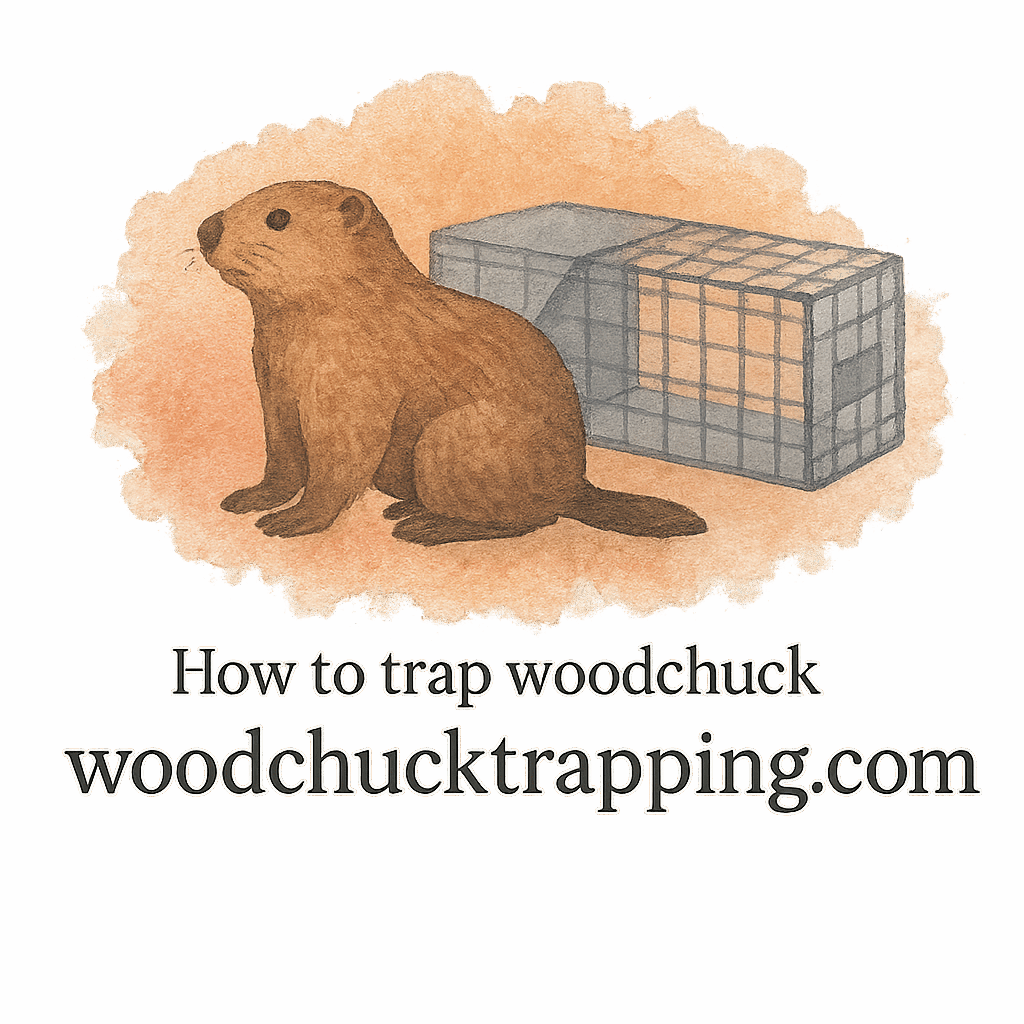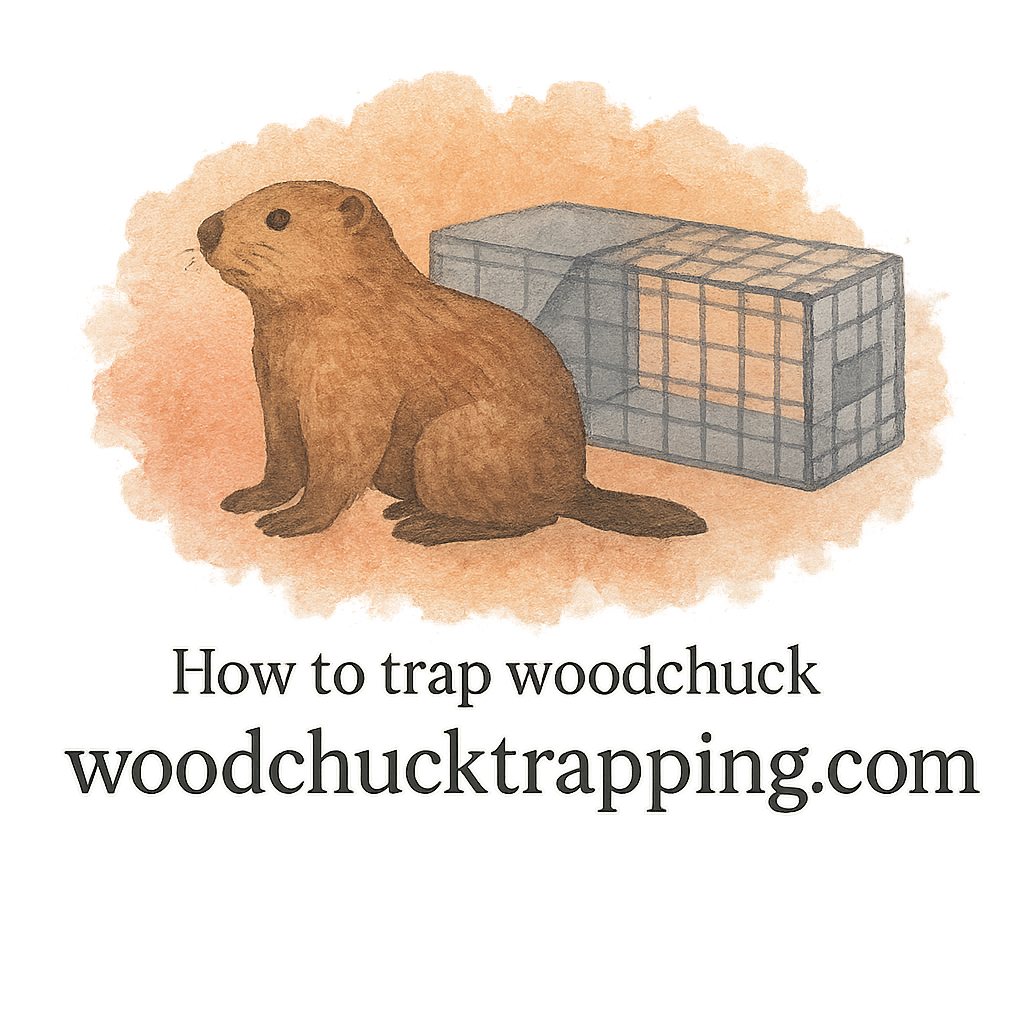Introduction
Ever catch a glimpse of a chunky, brown critter waddling around your backyard? If so, you’ve likely met the infamous woodchuck, also known as a groundhog. These sneaky diggers can cause major yard damage if left unchecked. The good news? You can handle them with a bit of ingenuity and some budget-friendly tricks. Let’s dig (pun intended!) into 10 DIY woodchuck trap hacks that actually work.
Why DIY Woodchuck Traps?
Cost-Effective Solutions
Store-bought traps and services can be pricey. DIY traps offer a more affordable alternative—often with stuff you already have in your garage.
Eco-Friendly Control
Forget harmful chemicals. With DIY traps, you’re choosing humane and environmentally conscious methods.
Easy Customization
You can tweak your trap setup depending on your yard size, woodchuck activity, and available materials.
Understanding Woodchuck Behavior
To outsmart a woodchuck, you’ve gotta think like one. These critters are routine-driven and highly food-motivated.
What Attracts Woodchucks?
Fresh veggies, sweet fruits, and leafy greens are like candy to woodchucks. They can sniff out an apple chunk from a mile away. Learn more about baiting and luring techniques at our Baiting & Luring Guide.
Signs of Infestation
Look for:
- Large burrow holes
- Dirt mounds
- Gnawed garden veggies
If you notice these, you’re likely dealing with a woodchuck problem. Check our article on infestation signs to know more.
Tools and Gear You’ll Need
Basic Trap Materials
- Wire mesh or cage
- Rope or string
- Wooden planks
- Bait (apple slices, cantaloupe, lettuce)
Safety Gear Essentials
Handling wildlife—yes, even the cute ones—can be risky.
Gloves and Handling Tools
Always use thick gloves. Not only do they protect you, but they also reduce the risk of transferring your scent. Learn more in our section on trap handling gear.
Scent Control Tips
Woodchucks are cautious. Use unscented soap before setting traps and handle bait with gloves. More on trap scent control.
Top 10 DIY Woodchuck Trap Hacks That Work
Let’s break down the tried-and-true methods backyard trappers swear by.
1. Use Sweet Fruits for Lure
Fruits like cantaloupe, apples, or peaches make irresistible bait. Try our expert tips on scent baiting.
2. Camouflage the Trap with Natural Surroundings
Cover your trap with leaves, grass, or branches to make it blend in. This makes the woodchuck less wary.
3. Pre-Bait the Trap Without Setting It
Give the woodchuck time to trust the trap. Place bait inside but leave it unset for a day or two. Check out our full trapping techniques guide.

4. Funnel the Path with Fencing
Use temporary mesh fencing to guide the animal toward the trap. This is especially helpful in small yards.
5. Add Weight to the Trap
Woodchucks are strong! Secure your trap with bricks or rocks to prevent it from tipping over.
6. Choose Compact Traps for Small Yards
Not much space? No problem. Use compact traps that fit tight areas but still do the job.
7. Set Traps at Burrow Entrances
Place the trap directly outside a fresh hole. This boosts your chances big time. Learn more about woodchuck burrows.
8. Reuse Woodchuck Trails
Woodchucks often use the same paths. Look for worn tracks or flattened grass and set traps along these trails.
9. Rotate Trap Locations Frequently
If a trap has been ignored for days, move it. Woodchucks catch on fast.
10. Mask Human Scent with Leaves or Dirt
Rub leaves or dirt on the trap and bait. This makes the trap smell more “natural” and less suspicious.
Humane Trapping Considerations
Check Traps Frequently
Never leave a trapped animal for long. Check traps every few hours and release humanely or contact wildlife control.
Know Your Local Trapping Laws
Not all areas allow DIY trapping. Be sure to check your local laws and safety regulations before setting anything up.
Avoiding Common Mistakes
Misplaced Traps
Too far from the burrow? No cover? These simple placement errors can lead to empty traps.
Wrong Bait Choices
Avoid onions, citrus, or anything spicy. Stick to fruits and leafy greens.
Ignoring Safety Protocols
Always wear gloves and wash up after. Safety isn’t optional—it’s essential. Learn more about trapping safety.
Long-Term Woodchuck Prevention Tips
Trapping is step one. Prevention is what keeps them gone.
Fence Your Garden Deep
Woodchucks dig. Install fences at least a foot underground and 3 feet high.
Use Repellents Consistently
Natural repellents like garlic spray or castor oil can help deter future visitors.
Clean Up Food Sources
Remove fallen fruits and secure compost bins to make your yard less appealing.
For ongoing tips, check our damage prevention guide.
Conclusion
Woodchucks might seem like adorable backyard guests, but they can wreak havoc if left unchecked. The good news is you don’t need to hire a pro or break the bank. These 10 DIY woodchuck trap hacks are effective, humane, and totally doable. Whether you’re working with a sprawling garden or a cozy little yard, you’ve got this.
And remember—prevention is just as important as the trap. Stay vigilant, rotate tactics, and always be ready to outsmart your furry nemesis!
Explore more woodchuck trapping tips at WoodchuckTrapping.com and browse gear reviews at Equipment Reviews.
FAQs
1. What’s the best bait for a DIY woodchuck trap?
Sweet fruits like cantaloupe and apples are top picks. They have a strong scent and are irresistible to woodchucks.
2. How often should I check my trap?
At least every 4–6 hours. This ensures humane treatment and quick action once a woodchuck is caught.
3. Can I trap woodchucks legally in my area?
That depends on local laws. Always check your region’s trapping laws before getting started.
4. Do woodchucks hibernate?
Yes, they usually hibernate from late fall to early spring. You’ll rarely see them in cold months.
5. Can I reuse traps after catching a woodchuck?
Absolutely! Just clean them thoroughly and use scent-masking techniques before resetting.
6. What if the woodchuck avoids the trap?
Try changing bait, rotating location, or using the pre-baiting trick mentioned above.
7. Is it better to trap or repel woodchucks?
Both! Use traps for active problems and repellents for long-term prevention.


